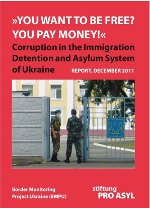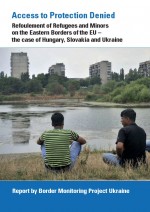While football fans may remember the controversy over hate speech ahead of the Euro 2012 games, two October 2012 developments in Ukraine have brought the need for human rights and refugee protection at Europe’s eastern borders back into the limelight. First, the Russian dissident Leonid Razvozzhayev was kidnapped from outside the UNHCR office in Kiev where he was claiming asylum, only to end up in Russian custody facing politically motivated charges. The following week, Ukraine’s ultra-nationalist party Svoboda, which openly supports a policy of ethnic cleansing, got as much as 12.5 percent of the votes in early polls, surpassing the threshold to enter parliament.
While these are indeed alarming developments, they are hardly new or surprising. They do, however, signal the need for international policies on refugee protection, freedom of movement, and human rights. Instead, EU policies created in the context of the economic crisis have fuelled a xenophobic moral panic about immigration, one that pushes ‘transit countries’ to institute securitisation and migration controls but remains out of touch with the lived realities of forced migration. As a result of such policies, for example, in February 2011 at least 1,400 sub-Saharan refugees fleeing racial persecution in North Africa drowned in the Mediterranean. There is much that remains mysterious about the conditions and policies that spur such dangerous border crossings – especially at eastern EU borders. Based on original evidence from the author’s recent field research on asylum migration to Ukraine, the goal of this article is to point to a fundamental contradiction between policies that seek to promote refugee protection abroad on the one hand but also institute controls on the freedom of movement. To this end, the article seeks to analyse the geopolitics and the integration initiatives that impact refugees in Ukraine, a country of transit and, increasingly, a sight of migration at the eastern border of Europe.



